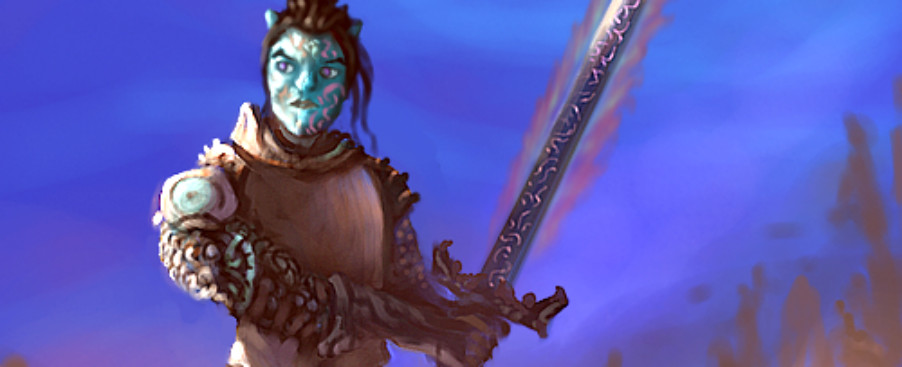Knights of the Chalice 2 Updates, Interview
-
Category: News ArchiveHits: 1576

Heroic Fantasy Games’ Kickstarter campaign for their D&D-based CRPG Knights of the Chalice II will be wrapping up in a few days. The campaign is already a success, and right now, with $44,071 pledged, the main question is which of the stretch goals will end up getting funded.
For now, though, there are detailed updates to check out. First, we have update #25 that shares an overview of the game’s Summoner class. Then, update #26 shares a new combat video and directs us to this recent Shane Plays interview that goes over many of the game’s systems and discusses some of the design principles behind it. Finally, update #27 lists a lot of feats that will be added to the game thanks to one of the stretch goals.
Here’s the latest combat video:
And an excerpt from the interview:
Regarding your mention of “amazingly deep tactical combat”, I notice that Knights of the Chalice 2 uses turn-based combat. Is this because of using the 3.5 OGL, or because you feel turn-based is a better tactical experience? Or maybe another reason entirely?
Above all, KotC 2 has a turn-based combat engine because I think that turn-based combat offers an infinitely more interesting tactical-combat experience. Don’t get me wrong here: RPGs with real-time or real-time-with-pause combat, such as Neverwinter Nights 2, Dragon Age, Diablo or the Infinity Engine games Planescape: Torment, Icewind Dale 2 and Baldur’s Gate 2, are very enjoyable. But tactical gameplay and the artificial intelligence do not shine in these games, in my opinion.
Even if the AI in a real-time game was doing something very clever, you would probably not even notice it because you have to focus on the actions of your own characters constantly. Area-of-effect spells are completely warped in games with real-time combat. By the time your Wizard has finished the spell casting animation, half of your targets have already moved away, or been slain by your other characters.
While turn-based combat encourages you to plan ahead and reflect about your tactics, real-time combat is a chaotic affair. Sometimes, it feels as though your characters do not need any input from the player in RPGs with real-time combat. I don’t feel in control of my characters the way I would in a game with turn-based combat, where every combat action is selected by the player.
A secondary reason for having a turn-based combat engine is the fact that Knights of the Chalice 2 is based on the 3.5 ruleset. The ruleset provides rules for turn-based combat, not for real-time combat. Many interesting combat actions, such as Five-Foot Step, Delay, Ready Versus Spell and Attack of Opportunity, often seem to disappear in real-time D&D RPGs.
In terms of the difficulty of creating the combat engine, I would say that development is not made any easier by opting to create a turn-based engine as opposed to creating a real-time engine.

